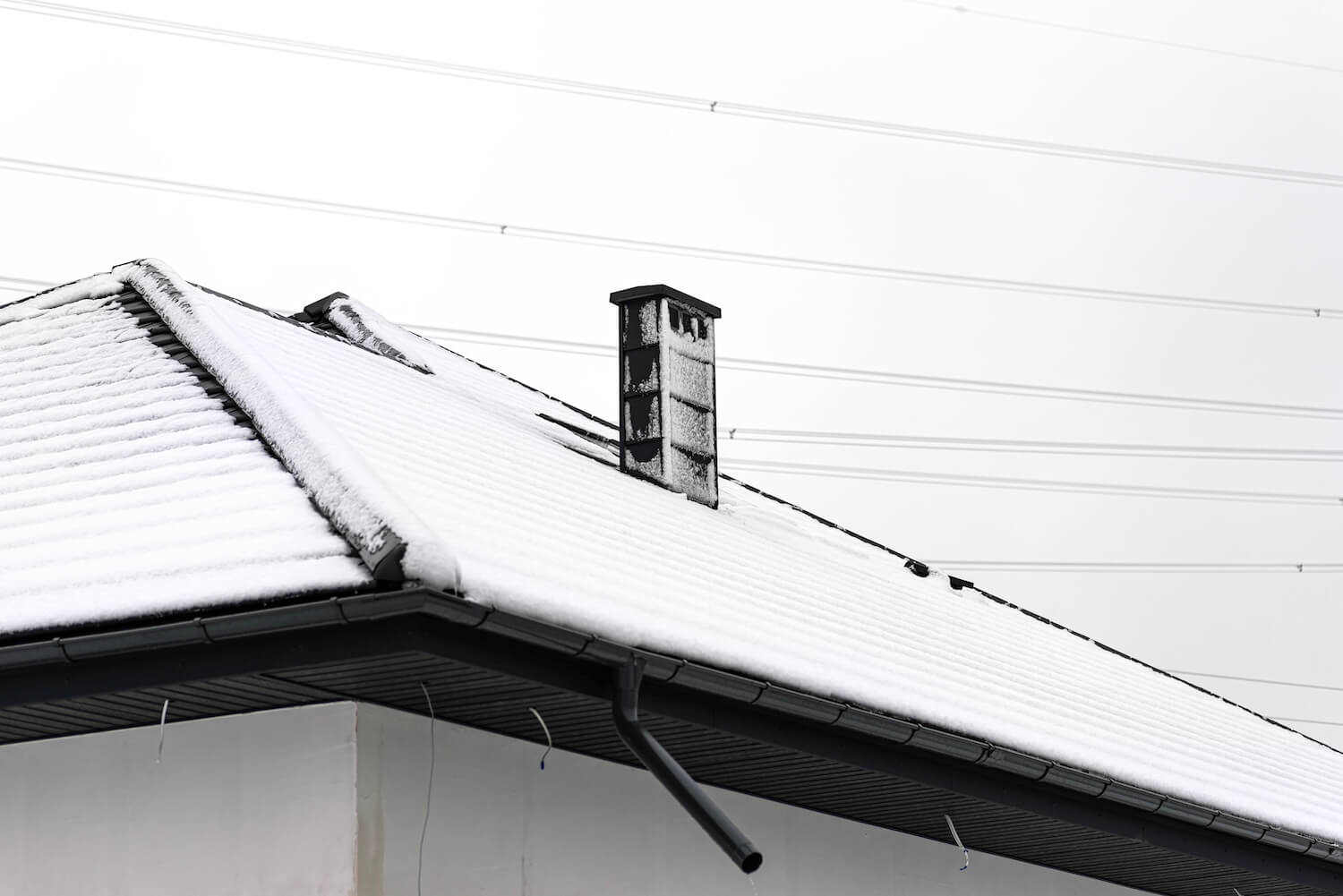Winter is a beautiful time of year, bringing with it the holiday season, cozy fires, and snowy landscapes. However, it can also bring with it some serious threats to your home, one of the most notorious being ice dams. These ice formations can cause significant damage to your roof and home’s interior, often leading to costly repairs. One of the most effective ways to prevent ice dams from forming in the first place is by ensuring your roof has proper ventilation.

Many homeowners are unaware of the crucial role roof ventilation plays in maintaining a healthy roof and preventing ice dams. In this detailed guide, we will take a deep dive into how roof ventilation works, how it helps prevent ice dams, why it’s a critical investment for your home, and how it ultimately saves you money. From the basics of what ice dams are to the intricacies of how roof ventilation systems function, we’ll cover it all.
What Are Ice Dams?
Before we dive into roof ventilation, let’s first take a closer look at ice dams and how they form. Ice dams are thick ridges of ice that form along the eaves of your roof, blocking the natural drainage of water. They’re a common problem for many homeowners during the winter months, but how do they develop?
The formation of ice dams begins with snow accumulation on your roof. During the winter, the attic and roof can become warmer due to heat escaping from the home. This warmth melts the snow sitting on the roof, turning it into water. As the water flows down toward the eaves, it meets the colder temperature near the edge of the roof, where the water freezes again, creating an ice dam.
Once the ice dam has formed, it prevents any additional water from draining off the roof, causing it to back up. This trapped water can seep underneath shingles, leading to leaks that can damage your roof, ceiling, insulation, and walls. Left unchecked, ice dams can lead to extensive damage, mold growth, and rotting wood.
Understanding how ice dams form is key to understanding how home roof ventilation helps prevent them.
How Roof Ventilation Works
Roof ventilation is a system that promotes the flow of air through the attic, which is essential for maintaining proper roof temperature and preventing ice dams. An effective ventilation system helps maintain a balanced temperature on the roof, preventing the melting-and-refreezing cycle that leads to ice dams.
Attic ventilation works by ensuring that cool air enters through intake vents at the eaves of the roof, while warm air exits through exhaust vents at the peak. This air exchange is crucial for regulating the temperature in your attic. The idea is to keep your attic cool and prevent the buildup of heat that can melt snow, which would otherwise refreeze as it reaches the eaves.
But why does this work so well in preventing ice dams? Let’s break it down:
- Keeps Attic Temperature Stable: Attics can become uncomfortably warm, especially during the winter when warm air from your home rises and gets trapped in the attic. This warm air heats the roof deck, causing the snow on the roof to melt. As the water travels down to the eaves, it refreezes due to the cold air at the edge of the roof. Proper attic ventilation ensures that the temperature in the attic stays close to the outside temperature, preventing this heat buildup.
- Prevents Snow Melt at the Roof’s Peak: Without ventilation, heat accumulates at the highest point of your roof. When the attic is poorly ventilated, the warm air melts the snow at the peak of the roof, and the resulting water travels down to the cold edge of the roof, where it freezes. Roof ventilation eliminates this problem by allowing the warm air to escape at the peak of the roof, keeping the entire roof surface closer to the same temperature.
- Prevents Ice from Forming at the Eaves: The primary purpose of roof ventilation is to keep the roof temperature even across its entire surface. Without sufficient ventilation, ice dams can form where warm and cold air meet—at the eaves. Proper ventilation ensures that snow on your roof remains at a consistent temperature, preventing it from melting and refreezing, thereby eliminating the potential for ice dams.
- Improves Overall Roof Health: Good ventilation does more than just prevent ice dams. It also helps prevent moisture buildup, wood rot, and mold in your attic. These issues can be costly to fix and can shorten the lifespan of your roof. Proper ventilation helps keep your roof and attic dry, which ultimately saves you money on repairs and replacements.
The Critical Components of Home Roof Ventilation
To effectively prevent ice dams, your roof must be equipped with a balanced and functioning ventilation system. Roof ventilation systems typically consist of two primary components: intake vents and exhaust vents. Let’s take a closer look at these components and how they work together.
1. Intake Vents
Intake vents are typically installed along the eaves or soffits of your roof. Their primary function is to allow cool air to enter the attic. This intake of fresh, cool air helps to maintain the temperature of the roof and prevents warm air from accumulating in the attic. Without proper intake ventilation, warm air will have nowhere to escape, leading to a buildup of heat that contributes to ice dam formation.
There are several types of intake vents, including soffit vents, which are located under the eaves and are the most common form of intake ventilation.
2. Exhaust Vents
Exhaust vents are installed at the ridge or peak of the roof. These vents allow the warm air in the attic to escape, creating a constant flow of air that prevents heat buildup. Exhaust vents come in several forms, including ridge vents, which are continuous vents installed along the roof ridge, and box vents, which are small, discrete vents placed in specific areas of the roof.
For proper ventilation, you need both intake and exhaust vents. Intake vents allow cool air to enter, while exhaust vents allow warm air to escape. The result is a balanced airflow that keeps the attic cool and prevents the temperature from rising too much, reducing the risk of ice dams.
3. Home Baffles
Baffles are small barriers installed in the attic to ensure that air can flow freely from the intake vents to the exhaust vents. They prevent insulation from blocking the airflow and help direct cool air to the peak of the roof. Baffles are particularly useful for homes that have blown-in or loose-fill insulation. These barriers ensure that the air can move unobstructed, allowing the ventilation system to work efficiently.
4. Home Roof Vents
In addition to soffit and ridge vents, other types of roof vents help with ventilation. These include turbine vents and powered vents. Turbine vents use wind power to expel hot air, while powered vents are electrically operated and can be controlled manually or set to operate automatically. While not as commonly used as ridge or soffit vents, these types of vents can still provide effective ventilation in certain roofing situations.
Signs That Your Roof Ventilation Needs Improvement
If you notice any of the following issues in your home, it’s time to take a closer look at your roof ventilation system:
- Ice Dams: If you see ice dams forming along your roof, it’s a clear sign that your attic is not properly ventilated. The heat buildup in the attic is causing the snow to melt and refreeze at the eaves, forming ice dams.
- Water Stains or Leaks: Water stains on your ceilings or walls are a sign that water is leaking into your home, likely due to ice dams. If your roof is leaking, it’s essential to address the ventilation issue to prevent further damage.
- Condensation in the Attic: Condensation inside your attic indicates that warm, moist air is trapped in the space. This can lead to mold growth, wood rot, and other serious issues. If your attic feels damp or musty, it could be a sign that your ventilation is insufficient.
- Increased Energy Bills: Poor attic ventilation can lead to higher energy costs. When warm air is trapped in your attic, your home’s heating system has to work harder to maintain a comfortable temperature, resulting in higher energy bills.
How Proper Home Roof Ventilation Saves You Money
Proper ventilation is an investment that can save you money in multiple ways:
- Prevents Costly Roof Repairs: Ice dams and moisture buildup can cause significant damage to your roof and attic. By ensuring your roof is properly ventilated, you can prevent this damage, saving you money on repairs and replacements.
- Extends the Life of Your Roof: Roofs that are exposed to fluctuating temperatures due to poor ventilation are more likely to degrade over time. Proper ventilation helps maintain a consistent temperature, preventing premature aging of your roof.
- Reduces Energy Costs: Ventilation helps regulate the temperature in your attic and your home, reducing the need for excessive heating in the winter and cooling in the summer. This can lead to substantial savings on your energy bills.
- Prevents Mold and Mildew Growth: Moisture buildup in an attic can lead to mold growth, which is expensive to remove. Proper ventilation keeps your attic dry, preventing mold and mildew from taking root and causing damage.
- Improves Home Value: Homes with well-maintained roofs are more attractive to buyers. If you plan to sell your home, having a well-ventilated roof that prevents ice dams can increase your home’s resale value.
How to Improve Your Roof Ventilation
If you suspect your roof ventilation system is inadequate, here’s what you can do to improve it:
- Inspect Your Attic: Have a professional roofing contractor inspect your attic for signs of poor ventilation, such as moisture buildup, mold, or uneven temperatures.
- Add More Vents: If your attic has too few vents, consider adding more intake or exhaust vents. A roofing contractor can help determine the best placement and number of vents for optimal airflow.
- Install Baffles: If your insulation is blocking the airflow, baffles can help direct air from the intake vents to the exhaust vents.
- Seal Gaps: Check for gaps in your attic that might allow warm air to escape into the attic. Sealing these gaps helps prevent heat buildup in your attic.
Conclusion
In summary, roof ventilation is an essential component of any home’s roofing system. By promoting proper airflow through your attic, ventilation systems prevent ice dams, reduce the risk of costly roof damage, and save homeowners money on energy bills and repairs. Ensuring your roof has adequate ventilation will protect your home from the dangers of winter weather, preserve your roof’s lifespan, and ultimately keep your home safe and warm all season long.
If you haven’t had your roof and attic inspected for proper ventilation, now is the time to do so. A professional roofing contractor can assess your home’s ventilation needs and recommend the best solutions for preventing ice dams and other roof-related issues. By investing in roof ventilation, you’re not only protecting your home but also saving yourself from expensive repairs in the future.










